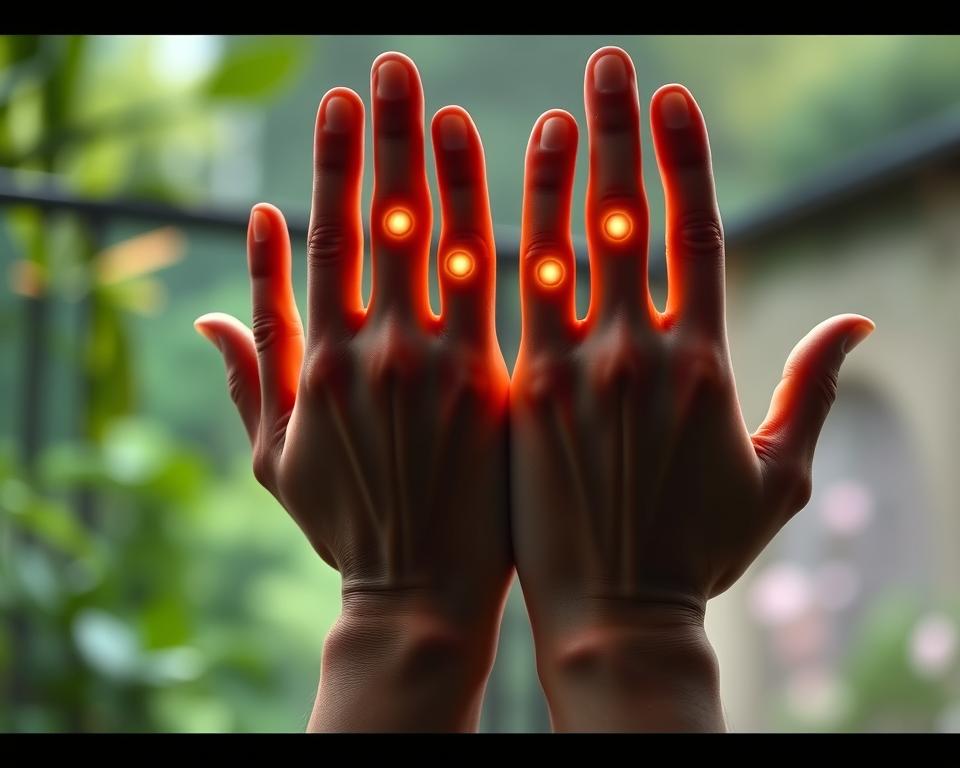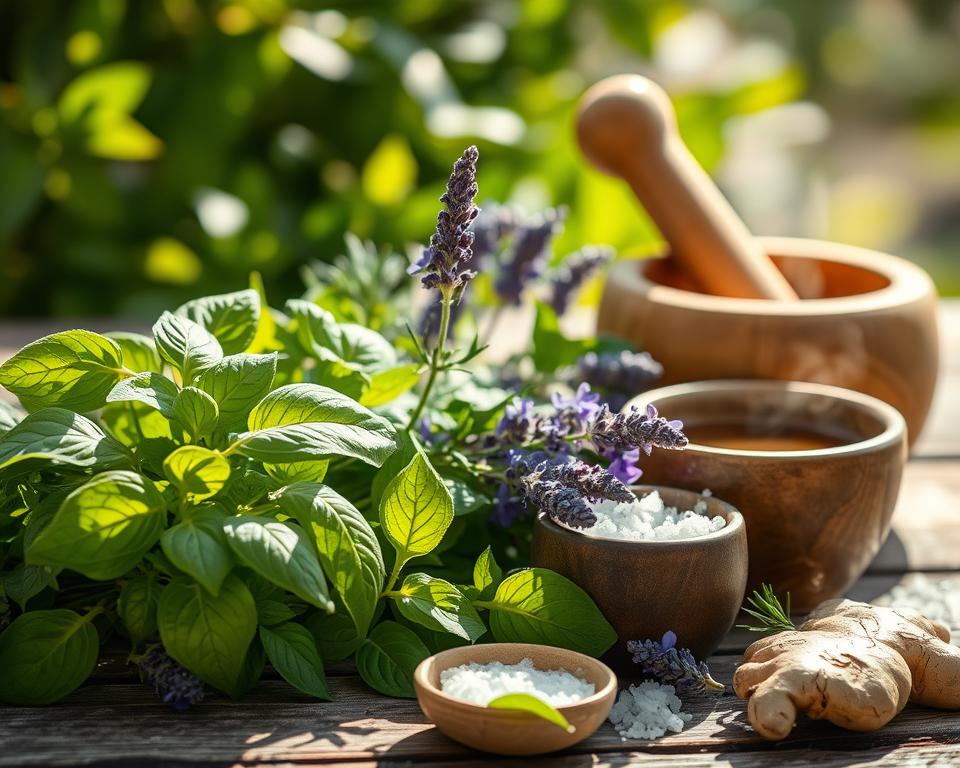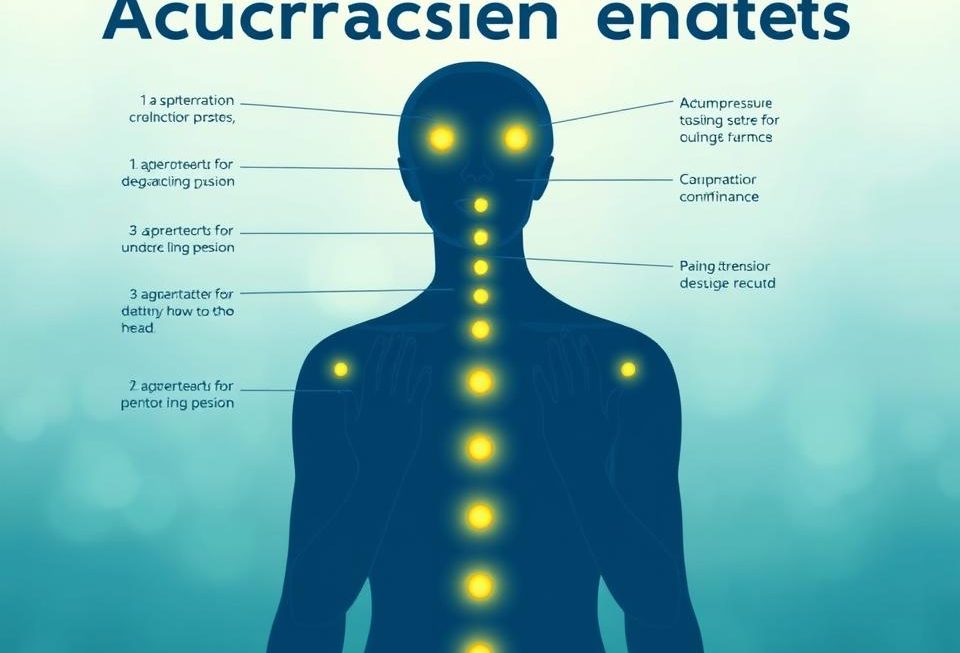High blood pressure, or hypertension, is a common health issue affecting millions globally. Many people look for natural ways to manage it, aside from traditional medicine. Acupressure, a traditional Chinese therapy, has become popular for this purpose. It involves applying pressure to certain body points.
This article will delve into acupressure’s benefits for high blood pressure. We’ll also explore its underlying principles. Plus, how it can be part of a broader approach to heart health.
Read more interesting information at ::sportsnews1
Understanding High Blood Pressure
High blood pressure, or hypertension, is when blood pressure is too high. It can harm your health and lead to serious problems if not treated.
Causes and Risk Factors
Hypertension comes from many things, like lifestyle, health issues, and genes. Common risk factors include:
- Obesity
- Sedentary lifestyle
- Excessive salt intake
- Stress
- Family history
Symptoms and Complications
High blood pressure often has no clear signs. This makes it hard to catch early. If ignored, it can cause big health issues, like:
- Heart disease
- Stroke
- Kidney damage
- Vision problems
Using acupressure is a natural way to manage high blood pressure. Knowing the risks helps you take action. You can look for alternative therapies for blood pressure and natural remedies for hypertension.
What is Acupressure?
Acupressure is a traditional Chinese medicine that’s been around for thousands of years. It involves applying gentle pressure to specific points on the body, called acupoints. These points are linked to the body’s energy channels, or meridians. Stimulating them is believed to help restore balance and promote healing.
History and Principles
The roots of acupressure go back to traditional Chinese medicine. It was used to help with various health issues, like traditional chinese medicine for cardiovascular health and complementary and integrative medicine for blood pressure regulation. It’s based on the idea of qi, or vital life force, flowing through the body’s meridians. Practitioners use pressure on specific acupoints to unblock and rebalance qi, aiming for better overall health.
- Acupressure has been practiced in China for over 5,000 years and has gained popularity worldwide as a natural and non-invasive approach to various health conditions.
- The practice is based on the belief that the body has over 2,000 acupoints that are connected to the body’s energy channels or meridians.
- Stimulating these acupoints through gentle pressure is thought to help restore the flow of qi, or vital energy, within the body.
“Acupressure is a safe, natural, and effective way to address a wide range of health concerns, including high blood pressure, without the use of medications or invasive treatments.”
Understanding acupressure’s history and principles helps see its value as a complementary and integrative approach. It’s especially useful for managing conditions like high blood pressure. This is often done through a mix of traditional and non-traditional therapies.
Benefits of Acupressure for High Blood Pressure
Acupressure is an ancient Chinese healing art. It’s becoming a popular holistic treatment for high blood pressure. By pressing certain points on the body, acupressure can help manage this common heart condition.
One key benefit of acupressure is its ability to relax and reduce stress. Stress is a big factor in high blood pressure. Acupressure helps by calming the body’s stress response and promoting relaxation.
Acupressure may also improve blood flow and heart function. It targets specific points to boost blood and oxygen flow. This can help keep the heart healthy and blood pressure in check.
Moreover, pressure point massage for lowering bp can release endorphins. These are natural chemicals that make us feel good and reduce pain. Feeling better and less stressed can help manage high blood pressure.
As a holistic treatment for high blood pressure, acupressure is great with medical treatments. It tackles the physical, mental, and emotional sides of high blood pressure. This way, acupressure offers a more complete approach to managing blood pressure and heart health.
“Acupressure is a powerful tool that can help regulate blood pressure and promote overall cardiovascular health. By stimulating specific pressure points, it can induce relaxation, improve circulation, and enhance the body’s natural healing processes.”
Acupressure and High Blood Pressure: How it Works
Acupressure for hypertension works by using the body’s natural healing ways. It applies gentle pressure to certain acupressure points for circulatory issues. This helps control blood flow and balance the heart and blood system.
In traditional Chinese medicine, these acupoints are key spots on the body’s energy paths. These paths, or meridians, are where vital energy, or “qi,” flows. By pressing these points, stress that raises blood pressure can be eased, and blood flow can improve.
Activating Pressure Points
The steps to use acupressure for hypertension are:
- Find the right acupoints: Certain spots on the hands, feet, and head affect blood pressure.
- Apply gentle, steady pressure: Use fingers, thumbs, or tools to press these points.
- Hold for 2-3 minutes: This lets the body respond and find balance.
- Do it again as needed: Based on how you feel, you might need to do it more than once a day.
Regularly using these acupressure points for hypertension can lower blood pressure. It also improves blood flow and boosts overall health.
“Acupressure is a simple, drug-free approach that can effectively complement conventional treatments for high blood pressure.”
Acupressure Points for Lowering Blood Pressure
Acupressure is an ancient Chinese healing practice. It offers a natural way to manage high blood pressure. By focusing on certain acupressure points, people might see their blood pressure drop. Let’s look at some key points believed to help lower blood pressure.
Yintang (Third Eye)
The Yintang point is between the eyebrows. It’s thought to calm the mind and body. Applying gentle pressure here can help reduce stress and promote relaxation, which can lower blood pressure.
Hegu (Large Intestine 4)
The Hegu point is on the hand, between the thumb and index finger. It’s known for easing stress and promoting relaxation. Stimulation of this point may lower blood pressure.
Taichong (Liver 3)
The Taichong point is on the top of the foot. It’s believed to regulate blood flow and balance the heart. Gentle pressure here may help lower blood pressure.
Neiguan (Pericardium 6)
The Neiguan point is on the inner wrist. It’s said to soothe the heart and may lower blood pressure. Using this point for acupressure points for hypertension or pressure point massage for lowering bp can be part of managing high blood pressure.
Adding these acupressure points to your routine might help manage high blood pressure naturally. But, always talk to a healthcare professional before starting any self-care practices. This is especially true if you’re on medication or have health conditions.
acupressure and high blood pressure
Acupressure is seen as a helpful way to manage high blood pressure. It works by applying pressure to certain points on the body. This is thought to help the body heal itself and control blood pressure.
Studies show that acupressure can lower blood pressure. This makes it a natural option for those looking for non-medical treatments. It’s especially appealing to those who want to avoid traditional medicines.
But, how well acupressure works can differ for everyone. It should not be used alone to treat high blood pressure. Always talk to a doctor or a trained acupressure practitioner before using it.
| Acupressure Point | Location | Potential Benefits for High Blood Pressure |
|---|---|---|
| Pericardium 6 (P6) | Inside of the wrist, about 2 inches above the wrist crease | Helps regulate blood pressure and reduce stress |
| Large Intestine 4 (LI4) | Between the thumb and index finger, in the fleshy part of the hand | Promotes relaxation and can help lower blood pressure |
| Kidney 1 (K1) | On the sole of the foot, in the depression between the base of the big toe and the second toe | Believed to have a calming effect on the cardiovascular system and help regulate blood pressure |
Acupressure can be a natural way to manage high blood pressure. But, it should not replace medical treatment without a doctor’s advice. Using acupressure along with medical treatment can be a good strategy. It’s important to work with healthcare providers to make it part of your treatment plan.

Precautions and Safety Considerations
Acupressure is usually safe and doesn’t hurt. But, there are some things to watch out for when using it for high blood pressure. Don’t press on certain spots if you’re pregnant or have a pacemaker. Also, people with bleeding problems or serious heart issues should talk to a doctor first.
It’s key to use acupressure correctly to avoid any problems. This method can help with blood pressure regulation. But, knowing the safety rules is important when using it to manage hypertension.
| Precaution | Explanation |
|---|---|
| Pregnancy | Avoid applying pressure on certain acupressure points during pregnancy as it may have unintended effects. |
| Pacemakers and Implanted Devices | Applying pressure near these devices could interfere with their function, so it’s best to avoid those areas. |
| Bleeding Disorders | Individuals with bleeding disorders should exercise caution, as acupressure could potentially increase the risk of bleeding. |
| Severe Cardiovascular Disease | Patients with advanced heart or circulatory conditions should consult a healthcare provider before trying acupressure. |
By keeping these precautions in mind, you can safely use acupressure to help manage high blood pressure. You can use it along with other treatments.
Integrating Acupressure with Conventional Treatment
Managing high blood pressure requires a mix of non-pharmacological approaches and complementary and integrative medicine. Acupressure, an ancient Chinese medicine practice, can help alongside traditional treatments.
Consulting with Healthcare Providers
Before adding acupressure to your plan, talk to a doctor or a licensed acupuncturist. They can guide you on the right techniques, how often to use them, and how to mix it with your current treatments.
Team up with your healthcare team to make sure acupressure works well with your meds and lifestyle changes. This teamwork boosts your chances of managing hypertension effectively.
| Integrating Acupressure with Conventional Treatment | Benefits |
|---|---|
| Consult with healthcare providers | Ensures safe and effective integration with existing treatment |
| Follow guidance on appropriate techniques and frequency | Enhances the overall effectiveness of the treatment plan |
| Complement prescribed medications and lifestyle changes | Provides a holistic approach to managing high blood pressure |
By working with your healthcare providers, you can safely add acupressure to your hypertension management plan. This complementary and integrative medicine can help you control your blood pressure better.
Lifestyle Changes for Blood Pressure Management
Healthy habits are key to managing blood pressure. Simple changes can make a big difference. They help keep your heart healthy.
Eating a low-sodium diet is crucial. Focus on fruits, veggies, whole grains, and lean proteins. Avoid processed and high-sodium foods.
Regular exercise is vital. Aim for 30-60 minutes of moderate exercise a few times a week. Activities like brisk walking or swimming are great.
Stress can raise blood pressure. Practices like meditation, deep breathing, and yoga help. They reduce stress and keep blood pressure in check.
Keeping a healthy weight is important. A balanced diet and exercise help. Aim for a healthy body mass index.
Combining these lifestyle changes with natural remedies can greatly benefit your heart health. It reduces the risk of complications.

Traditional Chinese Medicine and Hypertension
Traditional Chinese medicine (TCM) offers a unique way to manage high blood pressure. It believes in the balance of the body’s vital energy, called qi. In TCM, high blood pressure is seen as an imbalance in qi flow, especially in the heart.
Holistic Approach to Health
TCM looks at health differently than Western medicine. It focuses on the whole person, not just symptoms. By using complementary and integrative medicine for blood pressure regulation, TCM aims to balance the body and improve overall function.
- TCM sees the body’s organs and meridians as connected. It tries to find and fix the root of imbalances.
- Acupressure, a key part of TCM, uses specific points to help qi flow and support heart health.
- TCM also stresses the role of lifestyle in keeping blood pressure healthy. This includes diet, exercise, and managing stress.
TCM’s holistic view offers a natural way to manage high blood pressure. It provides individuals with strategies to support their heart health.
Research and Evidence on Acupressure for Hypertension
Many studies have looked into acupressure’s role in managing high blood pressure. The research is still growing, but some studies suggest acupressure can help lower blood pressure. This is especially true when it’s used with lifestyle changes and traditional treatments.
A detailed review in the Journal of Hypertension found acupressure can slightly lower blood pressure. The study said the biggest benefits come when acupressure is used with other treatments for high blood pressure.
“Acupressure may be a useful complementary therapy for individuals with high blood pressure, but further high-quality research is still needed to fully understand its long-term efficacy and mechanisms of action.”
Another study, in the Journal of Alternative and Complementary Medicine, looked at 19 studies with over 1,400 participants. It found acupressure might lower systolic blood pressure by 3.5 mmHg and diastolic by 2.4 mmHg, compared to controls.
But, the quality and consistency of these studies vary. More large-scale, high-quality studies are needed to confirm acupressure’s benefits for high blood pressure. Always talk to a healthcare provider before trying acupressure for hypertension.
The research on acupressure and high blood pressure is encouraging. But, it’s important to remember acupressure shouldn’t replace traditional treatments. It could be a helpful addition to your treatment plan, along with lifestyle changes and medical care.
Getting Started with Acupressure
If you want to use acupressure for high blood pressure, start with a pro. Look for a licensed acupuncturist or a healthcare provider who knows acupressure. They can show you the best acupressure techniques for circulatory issues and how to use pressure point massage for lowering bp.
There are also many resources for learning acupressure at home. You can find videos and books that teach you the right techniques. They’ll help you know which acupoints to use for blood pressure.
Start slow and pay attention to how your body feels when you begin. Everyone reacts differently. Find what works for you. Adding acupressure to your health routine can help manage high blood pressure naturally.
“Acupressure is a powerful tool for addressing circulatory issues and promoting overall well-being. With the right guidance and commitment, it can be a valuable addition to your high blood pressure management plan.”
| Acupressure Technique | Benefits for High Blood Pressure |
|---|---|
| Stimulating the Liver Meridian | Helps regulate blood flow and reduce stress |
| Applying Pressure to the Heart Meridian | Promotes relaxation and lowers heart rate |
| Activating the Kidney Meridian | Supports the body’s natural balance and blood pressure regulation |
Conclusion
Acupressure is a promising therapy for high blood pressure. It works by pressing certain points on the body. This helps control blood pressure, improves blood flow, and relaxes the body.
Studies show acupressure can be a great addition to managing high blood pressure. It works best when combined with healthy lifestyle choices and medical treatment.
More research is needed to fully understand how acupressure affects blood pressure. But its benefits are clear. It helps address the causes of high blood pressure like stress and poor circulation.
If you’re looking into acupressure for high blood pressure, talk to a healthcare provider first. They can teach you how to use it safely and effectively. This way, you can manage your blood pressure and live a healthier life.



